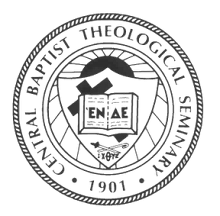As a title for the lectureship, I borrowed a line from Mary Oliver’s poem, The Summer Day, where she poses the question: “What do you plan to do with your one wild and precious life?” Since this is the key question asked of college students (especially by parents if they are footing the bill), I chose to speak on vocation. I suggested that there were three ways to answer the question: 1) Become a unique self; 2) Become a summoned self; and, 3) Become a centered self. In the first lecture I offered a theological anthropology, i.e., what does it mean to be created in God’s image. In the second, I offered guidance on how one might discern one’s particular calling. And in the final lecture, I introduced key spiritual practices that will ground one’s life as a faithful Christian.
This coming Sunday the Christian church in the West will celebrate Transfiguration Sunday, the final Sunday before we embark on the Lenten journey. The experience on the mount where Peter, James, and John witness a conversation that includes Moses and Elijah, along with their teacher, Jesus, is stunning and disorienting.
Transfiguration, from Art in the Christian Tradition, a project of the Vanderbilt Divinity Library, Nashville, TN.
The word “transfigured” means to undergo a metamorphosis, which is what the disciples observed. Jesus glows with a transcendent glory, and the veil of history is lifted so that there is past and present and future simultaneously. The shining of Jesus’ face is surely an allusion to Moses’ experience on another mountain, and continues Matthew’s theme that “one greater than Moses” is here.
Not only does the scene suggest that Jesus fulfills the message of the Law and the Prophets, but that the disciples are to listen to him. In Matthew’s post-resurrection depiction of the vindication of Jesus, the Son of Humanity embodies God’s past and future. The transfiguration of Jesus invites his followers to be changed after his likeness, from one degree of glory to another” (2 Corinthians 3:17-18).
The Transfiguration – Matthew 17:1-13 – JESUS MAFA. Transfiguration,
from Art in the Christian Tradition, a project of the Vanderbilt Divinity Library, Nashville, TN.
It is because of the wild and precious life of Jesus that we are beckoned to allow transfiguration in our lives, also. We can become courageous exemplars of faith as we continue to look to Jesus who pioneers the human pathway.
Molly T. Marshall
Central prepares women and men for seeking God, shaping church and serving humanity.




No comments:
Post a Comment